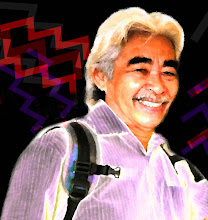 Date of launching
Date of launching: 11-2-08 , by
Datuk Seri Abdullah Badawi, Malaysia's 5
th Prime Minister.
What is SCORE? It is an acronym for Sarawak Corridor of Renewable Energy. Unlike our bedroom corridor, a regional
corridor means that the government is serious about making
Bintulu as a highway to reach develop n
ation status by 2020, through one of its major economic generators i.e. renewable energy resources from
Bakun hydro electric dam.
Bintulu's Bakun and a couple of
scattered mini-hydro dams throughout SCORE territory, will power a maximum of 24,000 megawatts of electricity for the next 10 - 15 years of consumption internally in Sarawak and Peninsular Malaysia( exported by way of sub-m
arine cables) to industrialists as well as individual home owners.
Though the centre of SCORE is
Mukah (by designing it into a smart city, where
SCORE's policies and master planning will be incubated and pushed for implementation) , at the point of writing, there is nothing substantial in
Mukah that can be relied upon to claim a measure of industrial progress
that can be showcased at launching time. Thus
Bintulu became a natural choice, because even now
Bintulu is already a successful industrial showpiece in
Sarawak. For Bintulu 2020 is now .
It was therefore a wise move to make
Bintulu as the launching pad and
Mukah can initially rely on
Bintulu's success to pump on its renewal
energy ambitions.
Well, all 's well that ends well.
The launching was received by a strong 15,000
pre-Parliamentary
election crowd, by the mouth of
Bintulu's m
ain river, the
Kemena River, where once
the local
Bintulu Melanaus went out to sea to
defeat the last of the
Illanun p
irates roaming the South China Seas and most feared by the western colonists back then.







+2007.jpg)












